The success of any teacher relies partially on how well he or she is organized. Even with a full blown curriculum to follow, or just a set of well laid out lesson plans, knowing how to properly organize lesson plans can have a big impact on how smoothly the school year will go.
As teachers and parents, we have a lot going on at one time. I like to think of it as having to keep many different fires stoked and roaring. To keep my preschool running smoothly, and my instruction of high quality, I have to make sure several things are happening on a consistent basis. For example, I have monthly newsletters, weekly reports, snack schedules, parent notes, field trip reminders, book orders, and so on…and those are the things that happen regularly. That doesn’t include the pieces of just running a business, or keeping track of my lesson plans and supplies.
The later is of equal importance to everything else but carries the bulk of my time.
So, I took some time this summer to really streamline how I organize lesson plans.
Do You Need to Organize Lesson Plans? I Did.
If you’ve found yourself on this page, you’ve probably purchased my math and literacy lesson plans for preschoolers. If not, that’s ok, too, this will still be helpful to you, but if you have…well…you know how comprehensive they are. You know how difficult it may be to keep track of nine units in math and 36 weeks of instruction in oral language, phonological awareness, and phonics. And, let’s not forget all the accompanying materials, including 72 printable math centers, 72 optional math picture books, as well as general classroom materials just needed to teach!
It’s a lot to keep track of.
But I’ve got the answer for you. You can take the guesswork out of what you think will work, and let me show you what I know works…for me at least.
The Best Way to Organize Lesson Plans
Having spent several years using my own preschool lesson plans, I can attest that not all organizational systems are created equal. Any teacher or parent can agree with that.
So, the following is exactly how I organize my lesson plans.
Print and Bind the Lesson Plans
It took me a few years to learn this one. Yes, of course, I had the lesson plans printed out, but originally I just had them in a 1.5 inch three ring binder, as I recommended in this post. But here’s the problem with a three ring binder: they are big and bulky.
This year, I took my lesson plans to an office supply shop and had them spiral bound, just like a commercial curriculum. I made up some really simple covers (you can get yours for free at the bottom of this post), and had them printed on card stock. I also had a piece of thick plastic added to the front and back of each set for added durability.
Binding both my literacy and math lesson plans together cost me a whopping $12 and some change. What a steal, I think!
Organizing Math Lesson Plans Within the Spiral Book
My math lesson plans come with a spiraling scope and sequence based on the week of the school year. This means that while the bundle comes with nine units, I don’t teach them consecutively. Instead, I teach a week in shapes, a week in counting, a week in sorting, and so on. Because of this, I had to re-organize the lessons to follow my scope and sequence. The advantage to this is that when I am reviewing the lessons for the week I no longer need to flip through the entire book to find the lesson I need.
But you can see in the photo above there are a lot of dividers in the book. These are the instructions for the math centers, which I kept as units. Once you learn the centers, you won’t need to refer to the instructions often, but since I’m prone to getting things mixed up, or just outright forgetting important things, I organized the instructions for all 72 centers based on the unit. Covers for those are also included.
Organizing Literacy Lesson Plans Within the Spiral Book
While the free download offers covers for each component in the literacy lesson plans, I chose not to use them. The simple reason is this: these lesson plans all correspond with a week in the school year, so I organized them accordingly. Week one in oral language, followed by week one in phonological awareness, then week one in phonics. Then we start on week two, following the same pattern.
Organizing Other Pieces of Lesson Plans
Both sets of lesson plans come with additional materials necessary for fully implementing the program.
Additional Math Supplies
To organize my math centers, I use scrapbook boxes, such as these. They work beautifully because they are big enough to hold full sheets of paper and they are flatter than most other storage containers, making it so that they do not take up as much room. I have a container for each math unit.
Depending on the center, I use binder clips to keep the pieces together, or rubber bands and some even zip top baggies. This is also where I store any other supplemental materials for each unit, such as my counting and number identification games, or this rainbow bears printable for the balance scale.
For manipulatives that do not come with the lesson plans, such as unifix cubes, shape buttons, clothespins and rainbow math counters, I keep all those in smaller storage containers on the shelf above.
Additional Literacy Supplies
My literacy lesson plans come with several printable pieces necessary for implementing the plans. I print the phonics pictures in a 4×6 format and they fit nicely in a smaller container, similar to this storage tote, where I used cardstock to make dividers. I also use the same container to store the letter cards and smaller alphabet cards. I also print the alphabet cards in full size, laminate them, and the store them in a file folder. (Remember, my classroom must be mobile, so I don’t have these posted).
Organize Lesson Plans on a Weekly Basis
Since my lesson plans are designed by the week and not the individual lesson, I only pull the materials I need for each said week. I keep those materials in a large plastic dishpan that sits on my kitchen counter during preschool hours. This makes it easy to transport to and from circle time and the preschool table, and gets stowed away in a closet during non-preschool days.
During the school year, I try my best to keep all my lessons on the exact same week of the school year. This means if I’m on week 12 in oral language, then I try to be on week 12 in all the other preschool lessons as well as math. That makes planning so much easier! Of course, I also use this super cute planner to keep all myself straight, too.
While lesson planning, even when you already have lesson plans, can be overwhelming, there is not need for it. Teachers and parents who can establish a simple system to organize their lesson plans can enjoy the year teaching instead of feeling scattered.
Download Your Free Lesson Plan Covers
Don’t forget to grab your free lesson plans covers. They’re not cutsey, but they certainly will do the job!
Math and Literacy Lesson Plan Covers

I’m Sarah, an educator turned stay-at-home-mama of five! I’m the owner and creator of Stay At Home Educator, a website about intentional teaching and purposeful learning in the early childhood years. I’ve taught a range of levels, from preschool to college and a little bit of everything in between. Right now my focus is teaching my children and running a preschool from my home. Credentials include: Bachelors in Art, Masters in Curriculum and Instruction.
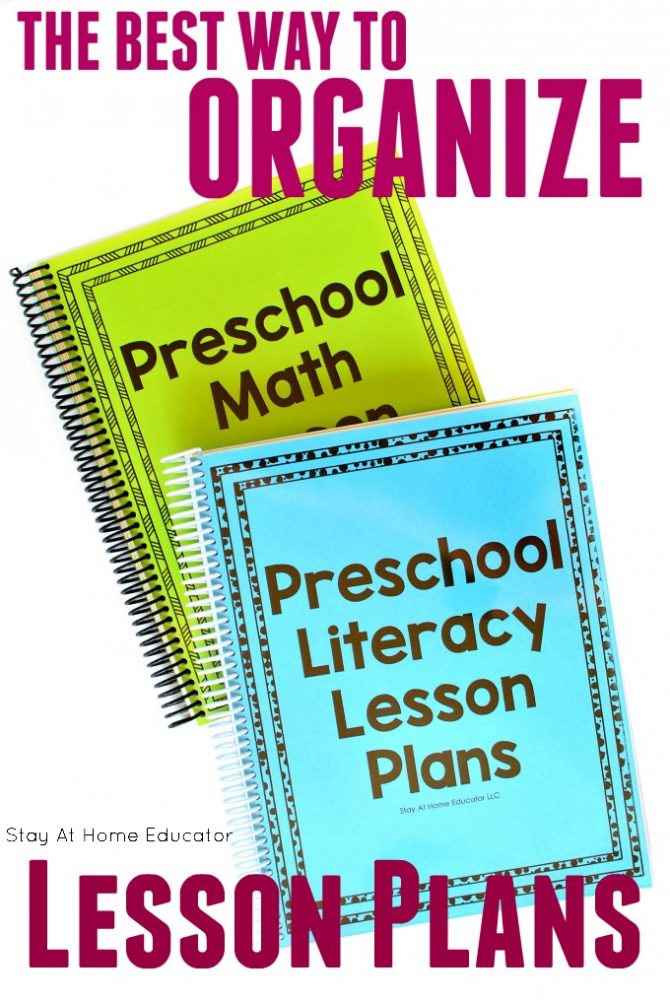
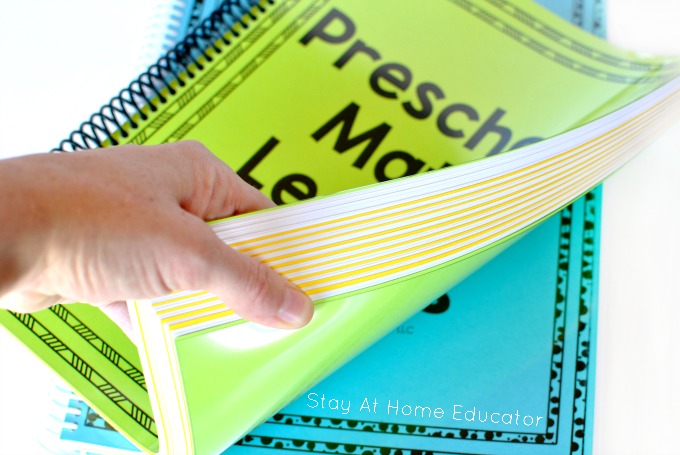
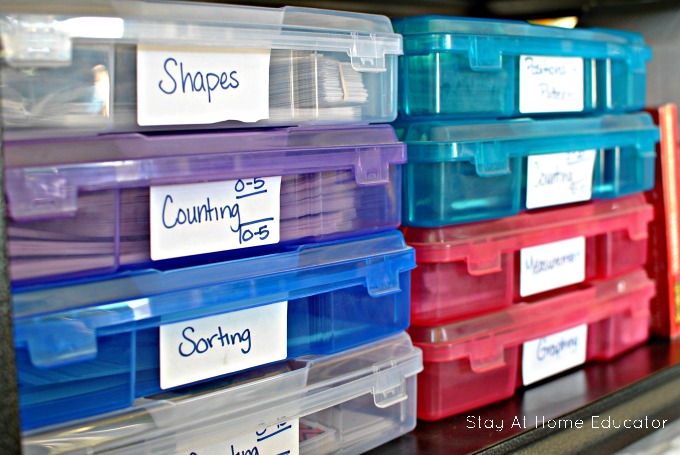
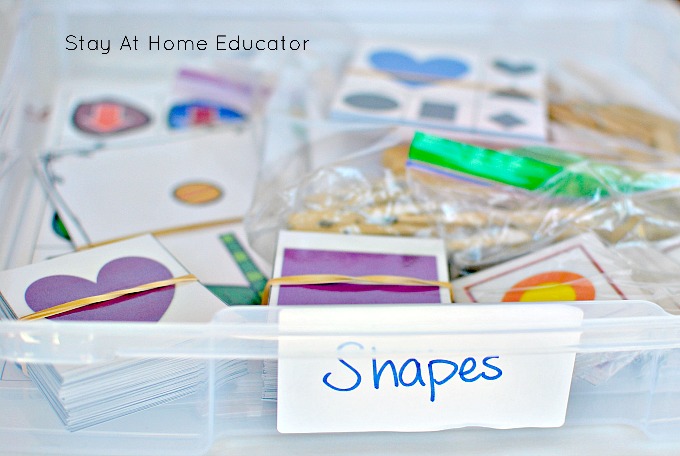
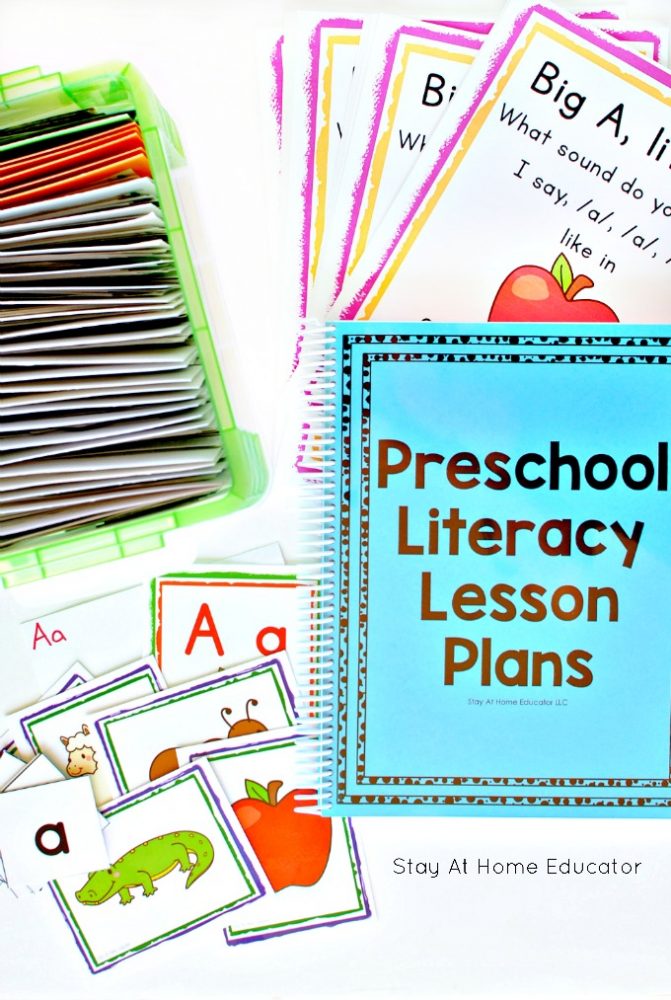
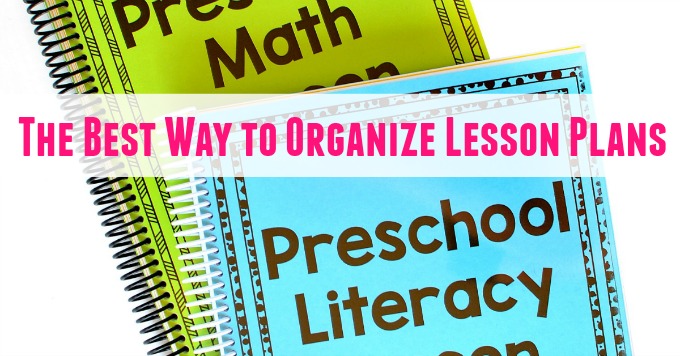

[…] the school year and when it should be taught. It is meant to guide your instruction. It helps you organize skills and content in a systematic way so that your instruction is intentional. You can use a […]